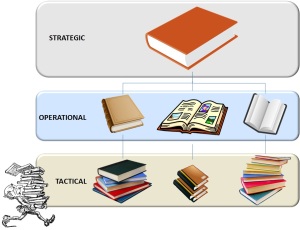Ever been interested in starting your own business, but wasn’t sure where to start? Have you started to build that new business and lost some drive floundering on the next step?
Well, I’m in the process of building a new business, which requires writing a new book, an assessment tool, creating a website, developing extensive training materials, and creating a consulting approach and appropriate certification program.
I have the idea, but what gets me jazzed and on the road is writing the business plan. Maybe this isn’t for everyone, but I just can’t see anyone risking all the effort and potential money in the development of an idea as a business and not have a plan.
The best part about writing the plan is that it documents everything running around in my head, which gets in the way of other stuff I need running around in my head.
The first task is to outline the plan. Like any good paper, you need a framework. If you plan to seek funding (loans or investments) you will need a good business plan–ideas without plans are just that. Few will financially support that. So this is where you start.
I’m at the second step…the fun part. Describing the idea–the business–and writing out the mission and vision. This is what truly frames out what you are trying to do. Many people think that “Making Money doing something” is their mission–if you start there, you’ve failed. Chances are that your business will fail too, probably in the first six years. Your mission is really WHAT you do–the purpose and part of the why you exist. Your business will either plan to make something or to provide something (product or service); possibly both. What is the expected outcome of these products and services.
I always thought that Booz Allen Hamilton had a pretty effective mission statement.
We solve our clients toughest problems.
That in itself is powerful–we weren’t there to make money off whatever job you needed, no you were calling in experts to focus on the hardest things you had to deal with. Yes, we made money at it, but that wasn’t the purpose of the company.
Next is the vision. This is really powerful and can send a definite message as to what you are all about. Throw out the statements like being best, being world class, etc… Think big and think about what effort you are willing to put behind your vision. Being the best at something means devoting time and money into becoming the best. Are you willing to do that, because if you are not, your vision will be empty.
Consider Booz Allen’s vision:
Delivering results that endure.
What this meant was that we came in, solved your toughest problems and then taught you how to keep the problem solved. We didn’t build a position or a technology that required regular financial support to keep it running. Many contractors do that–they create solutions that you have to continue to fund or they will collapse.
This was very empowering to me–it meant that I had to be so good that I was the solution that they couldn’t live without. Basically, I would become their trusted provider and the person they constantly turned to for their toughest problems.
Your vision should reflect that. It should scare you and excite you at the same time. It should represent a belief that puts you at risk, but promises much more.
This is why writing a business plan jazzes me and motivates me when thinking about starting a new business. Not only am I clearing my mind by fully documenting my ideas, but I’m really framing out the why in my new business endeavor. This is exciting.




















